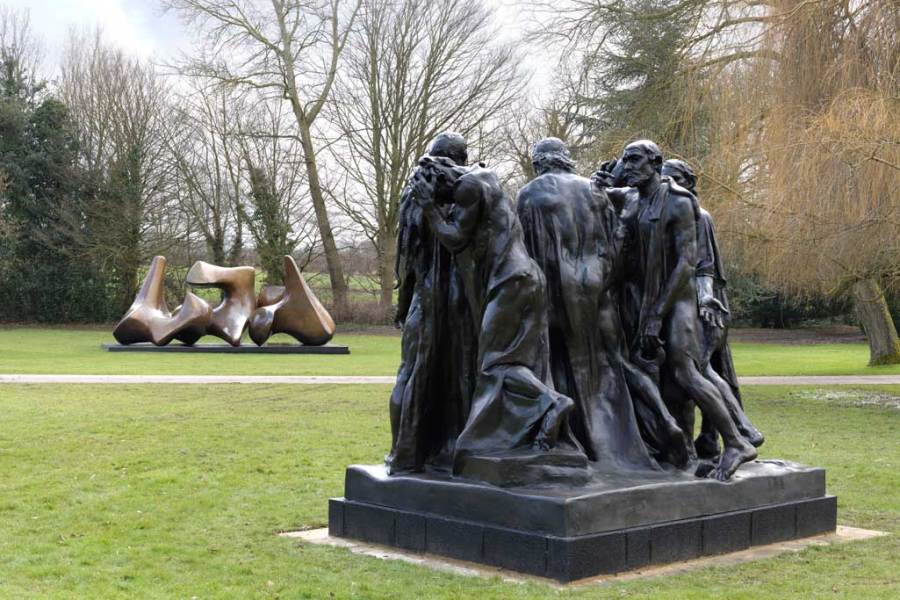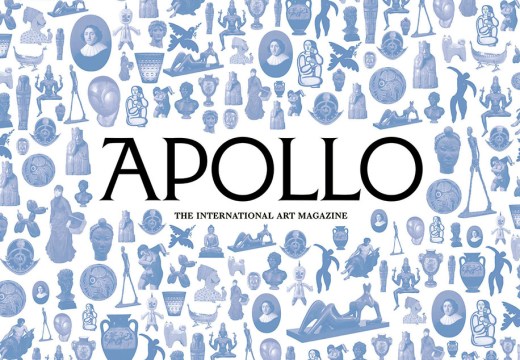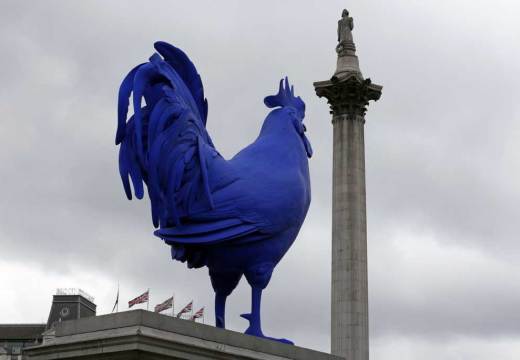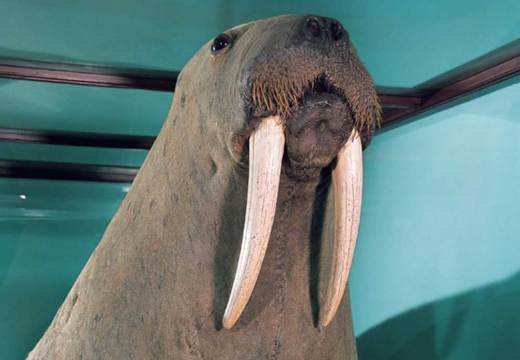The rolling hills at Perry Green, the site of Henry Moore’s (1898–1986) former studio and family home, are presided over by the artist’s monumental and prehistoric looking Large Reclining Figure (1984). This dramatic landscape provides the setting for ‘Moore Rodin’ (until 27 October), the first exhibition from The Henry Moore Foundation to feature another artist alongside the British sculptor.
At first glance, Moore and Rodin (1840–1917) seem unlikely bedfellows. Works such as Monument to the Burghers of Calais (Rodin, 1889) and Three Piece Sculpture: Vertebrae (Moore, 1968) reveal immediate contrasts. Rodin is all process, a master of expression whose figures erupt from the ground like gnarled rocks. Moore is instead elemental – his highly finished and organic forms mimic the surrounding landscapes.
Despite this, The Henry Moore Foundation are keen to reassure us that ‘closer examination reveals many shared concerns’. The obvious overlap here is the human figure. However, with the exception of Rodin’s drawings, such as Female nude with legs bent under the body (c. 1898–1902), a contorted figure whose curving lines form strikingly Moore-like cavities and shapes, this exhibition is defined more by differences than similarities.
Organised in association with the Musée Rodin in Paris, Richard Calvocoressi, Director of The Henry Moore Foundation, described this exhibition as ‘an Anglo-French collaboration of sorts’. Both are monographic museums dedicated to (arguably) their nation’s greatest sculptors. Both are also somewhat limited in the scope and range of their exhibition programmes. I had expected the show to resemble a kind of diplomatic cultural-exchange, well meaning but ultimately ill conceived. Thankfully, the juxtapositions are fruitful enough; the curators need not have laboured over negligible common ground (their shared interest in Michelangelo is rather like Picasso and Poussin’s shared interest in paint – it reveals very little).
The largest sculptures here are displayed outside of the museum spaces, and this ‘alfresco’ approach allows for some experimental pairings. For instance, Rodin’s Jean d’Aire Monumental Nude (1887) and Moore’s colossal The Arch (1969) occupy an entire field to themselves. Rodin’s life-sized figure with clenched fists echoes Moore’s two-pronged monolith that rises from the far-flung ground like a bronze whalebone. Despite the wildly different scales, the huge distance between them creates the illusion of equivalent size.
Clever arrangements such as this are typical and the joy here is all in the setting. The audience are forced to migrate between works, creating changing aspects and lighting conditions. Amid all the mud and the sheep, the artworks are refreshingly desecrated. Without planned routes or indeed specified places from which to view the sculptures, the boundaries between exhibition, museum and artwork are deconstructed, adding to a sense of discovery.
Despite these triumphs, the display is slightly undermined by the makeshift plinths. Both artists challenged this traditional motif in their careers, and it seems a shame to place their sculptures on poorly constructed and patchily painted breezeblocks. Had the bronzes been arranged to emerge directly from the soil, their impact would have been greatly enhanced.
‘Moore Rodin’ runs until the end of October and as the seasons change and spring turns to summer and again into autumn, these monoliths will evolve. The result is an ever-changing exhibition – one that will never be the same on any two days or for any two people.
‘Moore Rodin’ runs at The Henry Moore Foundation, Perry Green from 29 March–27 October.
Unlimited access from just $16 every 3 months
Subscribe to get unlimited and exclusive access to the top art stories, interviews and exhibition reviews.














![Masterpiece [Re]discovery 2022. Photo: Ben Fisher Photography, courtesy of Masterpiece London](http://www.apollo-magazine.com/wp-content/uploads/2022/07/MPL2022_4263.jpg)
Why are fathers so absent from art history?